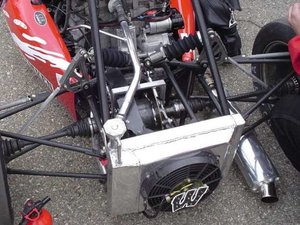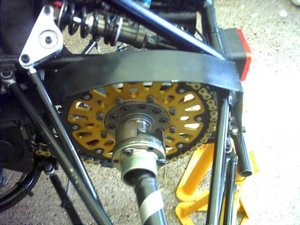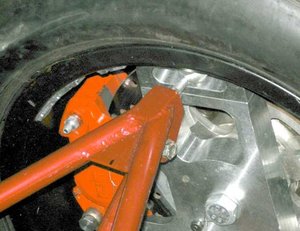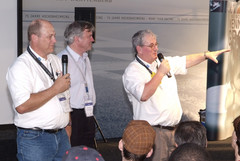Here it is, June already, with only one month to go until FSG.
May saw the running of FSAE in Michigan and we must congratulate the winners there. Western Australia, Stuttgart and TU Munich stood on the podium, shutting out the home teams and once again proving that the FSG teams are amongst the best in the world.
TU Graz took out the Design Award, to my mind, given the intent of the competition, almost as important as the overall placings. Congratulations to all and a special mention of commiseration to our friends from Helsinki who were disqualified in strange circumstances when in a podium position.
Formula Student at Silverstone is on in beginning of next month, and we wish a safe and enjoyable competition to all competitors. Good luck to the FSG group.
All the Engineering Design Reports have been posted and I downloaded and read them over the weekend. Some are very good, the majority are not very good and a small number do not meet the requirements of the rules. Steve Fox and I discussed this at the Design Review last year, so either teams are not listening or do not have a good knowledge transfer in their team. You can expect this subject to be covered again in the Design Review.
Why do I go on about this? It is because preparing Design Briefs to present to management is a critical skill when you are in the real world of business. The engineers can design a fantastic product, but unless they can properly brief the Board of Management, their project will go nowhere. If FSG is primarily about Education, then development of this skill is crucial.
I have had some enquiries about what the power-train Judges want to see at the competition. Some teams argue that if a 450cc car can win outright, as happened at FS last year, then there should be no real need to develop a 600cc engine. I see this argument as a justification for laziness!

Judges are skeptical people. This is Claude Rouelle (R)
Whatever engine is used and whatever development has gone into the power-train, the team must be able to justify their choices to the Judges. They will want to hear properly reasoned arguments, and lack of time and/or money are reasonable arguments. However, the judges will then want you to technically quantify your decision. It is not a money saving scheme to fit an engine that suffers oil surge and breaks down after a few laps of the enduro.
With 30 points suggested to Power-train on the judging matrix, most judges will score you as follows. They will allocate 15 points to a team who adapt an appropriate motorcycle engine and driveline. Additional points will then be allocated for well justified enhancements or application. Just because a team fit a turbocharger does not mean they will get more points. But if they have re-engineered the engine (compression ratio, valve sizes, cam timing etc) and have overcome the FSG turbo tendency to suck oil past the seals, then they can expect more points.
Of course, sloppy, poorly executed and misunderstood installations will lose points. I remember giving 2 points to a team several rears ago. Of course, that car didn’t run at all.
Recently there has been some discussion on FSAE forums about fitting a carburetor for simplicity rather than the almost standard fuel injection system. Fitting a carburetor will always cost some points, the exact number being relative to how well the team have incorporated the carburetor into their design. Carburetors are always potentially less efficient than fuel injection. They need a venturi and the resultant pressure drop in order to work. Also, they add about 7% fuel mass to the airflow before it passes through the mandatory restrictor. This limits the air mass, and therefore the ultimate power of the engine. Fit a carburetor and you can expect to take a beating from the Judges.

Ancient SU carburetor on a modern Honda engine
Removing first gear from the transmission might score some points, but not if that entails a huge rear sprocket which acts like a flywheel. Some months ago we talked about spool drives. On the face of it, a power-train Judge might see such a design as a cop out and mark it down, however, if the team really understand what they are trying to achieve and can demonstrate to the Judge the reasoning behind their decision, then there should be no penalty applied, and in fact, might gain some extra points.
The cooling system is also something the Judges inspect carefully. A properly sized and ducted radiator will impress the judges. Something hanging out in the breeze, hoping some air will flow through it, will not. Teams who mount the radiator at the rear of the car will be asked about heat transfer issues first, and about polar moment of inertia next. A radiator and its hoses full of water and probably a fan mounted will add significant mass at the extreme rear end of the car. Not only that, the air reaching the radiator will be preheated as it passes over the engine.

Rear mounted radiator puts mass behind the wheelbase
Recently, the judges have noted a trend by teams to omit a fan in their cooling system. I assume this is to reduce vehicle mass. Once the car passes into the hot area of the event, separate blowers and fans are not permitted. Certainly they will not be permitted at the Enduro driver change where heat soak has ended many a good drive. Judges will not look fondly at cars without a cooling fan unless the team put up a very convincing argument.
An ongoing point through this article has been that a team can minimise point loss by intelligently defending their Design decisions to the Judges. This is what FSG judging is all about. The team must know everything about their design and someone must have a full understanding of the reasoning behind every design decision. The Judge will not judge you based on his preconceptions unless you cannot defend your decisions.
Another area of concern in power-train judging is driveshaft angularity. Often we see shafts at very concerning angles. These are usually defended by saying the manufacturers permit operation up to 12° or some such number. That doesn’t mean they should run at that angle all the time! Sending power around corners is not efficient. Driveshaft joints should run at zero angle in normal operation. Anything else needs justification.

Here we have angled drive-shafts and a flywheel sprocket
The final thing the Judge will look at is how the power-train forces are reacted into the chassis. The very forces that accelerate your car along the track are also trying to tear the engine and transmission out of the frame. How there forces are reacted, especially in a monocoque car will be inspected carefully.
So, a well sorted, appropriately modified power-train and with a suitable installation should get a team very close to that available 30 points in the Judges guidelines. Usually, these cars are on the short list for the Design Final.
Often we see fantastic cars at the competition, but the team does not know why they are fantastic! Their decisions were made by people who are not present (possibly past students) or have simply been copied from other cars without knowing the reasoning behind them. These cars never make the Design Finals and afterwards we hear the team complain “Our car was better than their car…why did they make the finals and we didn’t”? They made the finals because they understood and defended their decisions better!
Good luck to all in the run up to FSG and I look forward to meeting you again in Hockenheim.
Pat

Pat’s Error of the Month.
Just to remind you:
Probably the worst example I ever saw. Yes, it did break, in the brake test!


